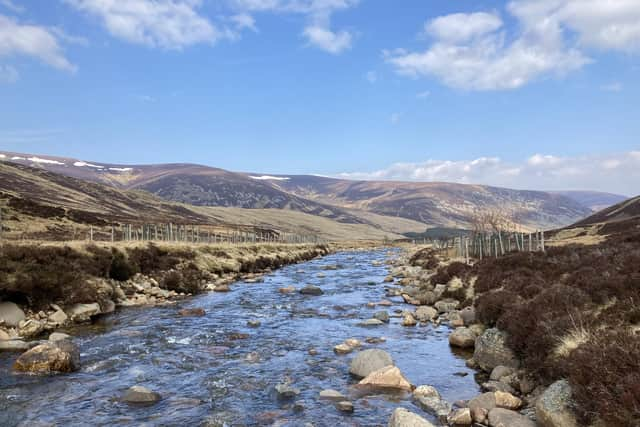Removing barriers to freshwaters - Craig Macadam


Scotland’s rich industrial heritage has however resulted in a legacy of interventions and barriers in our freshwater environments, particularly to free-flowing rivers. Our rivers have been dammed to power industrial processes, generate electricity and provide drinking water. Although many barriers have been removed, over 2,200 barriers remain in Scottish rivers. Whilst some of these are still operational, many are no longer used but still block the flow of the river, and the path of Salmon and Sea Trout on their migratory journeys. The result is that few rivers in Scotland can be considered to be truly free-flowing.
When a river is free-flowing, it is largely unaffected by human-made changes to its flow. Nan Shepherd, the celebrated Scottish poet, captured the essence of free-flowing rivers in her poem ‘The Hill Burns’ – “Out of these mountains, Leap the clear burns, Living water, Like some pure essence of being”. Water and sediments can move downstream unimpeded, fish and invertebrates can migrate freely, and the river is free to move and adjust naturally on its flood plain, whilst also replenishing groundwater sources.
Advertisement
Hide AdAdvertisement
Hide AdScottish rivers have been confined and constricted to prevent them flooding adjacent land. But our rivers need space to move and adjust naturally to varying water volumes so that they can regenerate habitat, improve wildlife, and help us adapt to climate change. This would allow natural processes to contribute to biodiversity restoration and act as a nature-based solution to the effects of climate change, such as flooding.


Installing passes to accommodate the migratory movements of fish does not reinstate natural river processes such as sediment movement or restore natural flow regimes. The only way to restore these natural processes is to remove barriers completely. Scotland’s River Basin Management Plan, published by the Scottish Environment Protection Agency in December 2021, aims to remove or ease 262 man-made barriers by 2027. At this rate of action it will take over 50 years to free our rivers.
Riverbanks are also an essential habitat for reptiles, particularly grass snakes and common lizards. Floodplain wetlands provide habitat for water beetles, amphibians, and wetland plants. But most rivers are disconnected from their floodplains by embankments and flow control structures. As well as being bad for wildlife, these barriers limit the scope of floodplains to reduce downstream flooding issues by holding water during high flows.
A stream or river is far more than the water we see in the river channel. The flow of water amongst the stones and gravels below and alongside the river is incredibly important, forming a refuge and habitat for the young of many invertebrates and often influencing the chemistry and life in the river above. This underground flow is of vital importance in ensuring the resilience of rivers to climate change. Extraction of water, development, and pollution can all affect this habitat, with sedimentation, and the subsequent blocking of the tiny spaces between the gravels a particular problem.
We need concerted action to restore our rivers, to set them free to move and meander, to allow Salmon and Sea Trout to access their ancestral spawning grounds, and to allow wildlife to flourish along their banks. We can’t wait for another 50 years to free our rivers, we need to do it now.
Craig Macadam is Conservation Director at Buglife, and convenor of Scottish Environment LINK’s freshwater group.
Comments
Want to join the conversation? Please or to comment on this article.